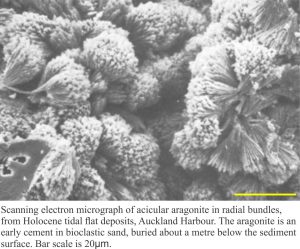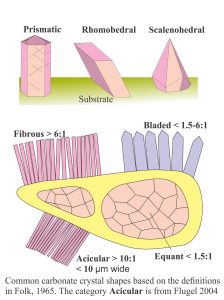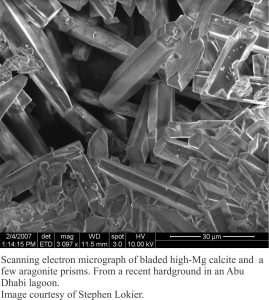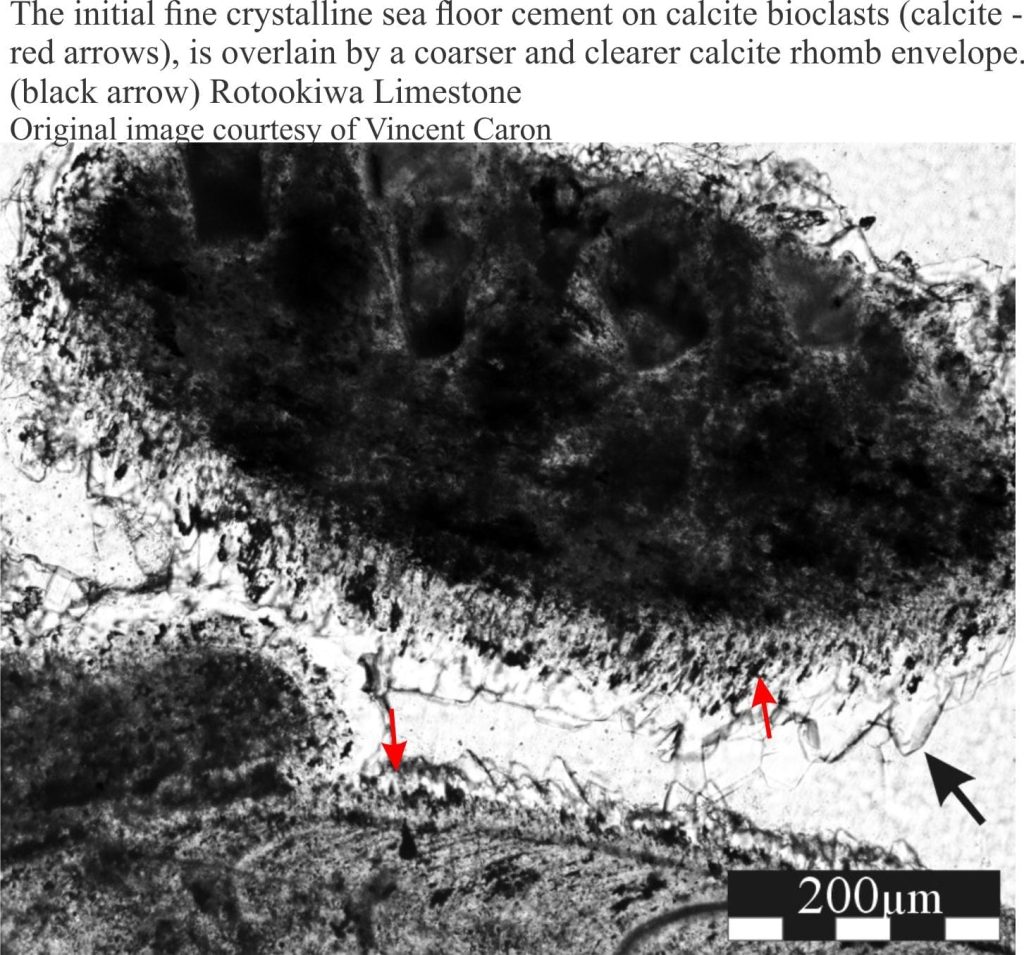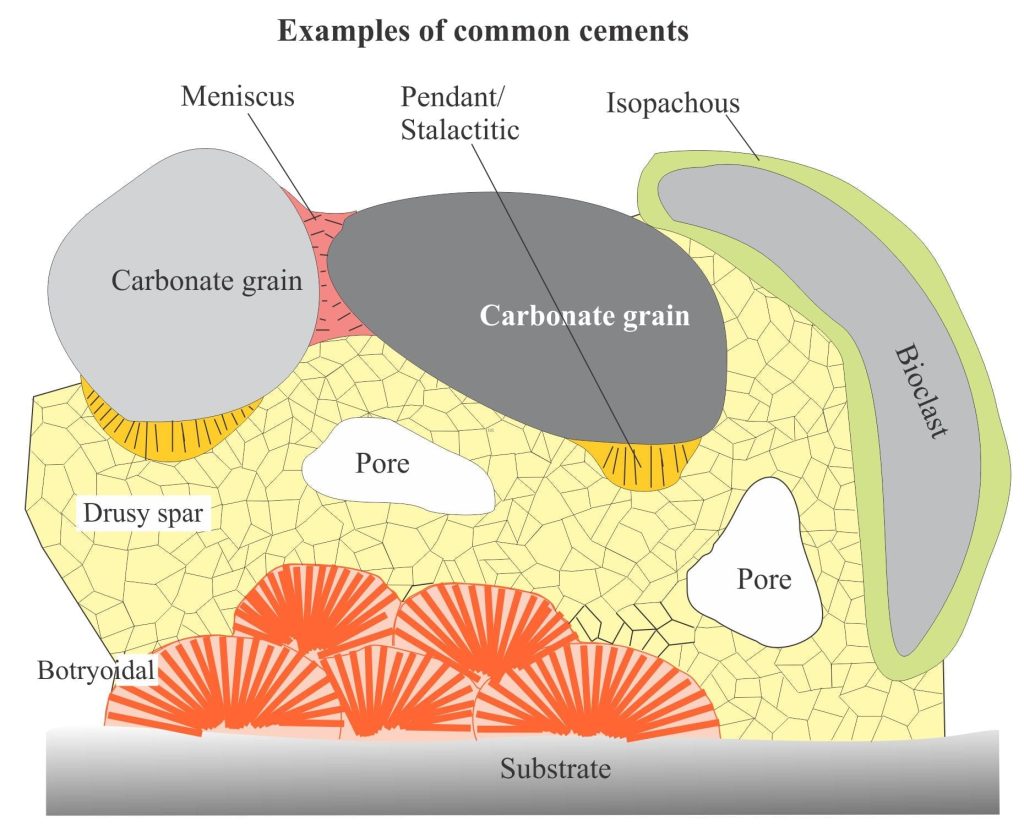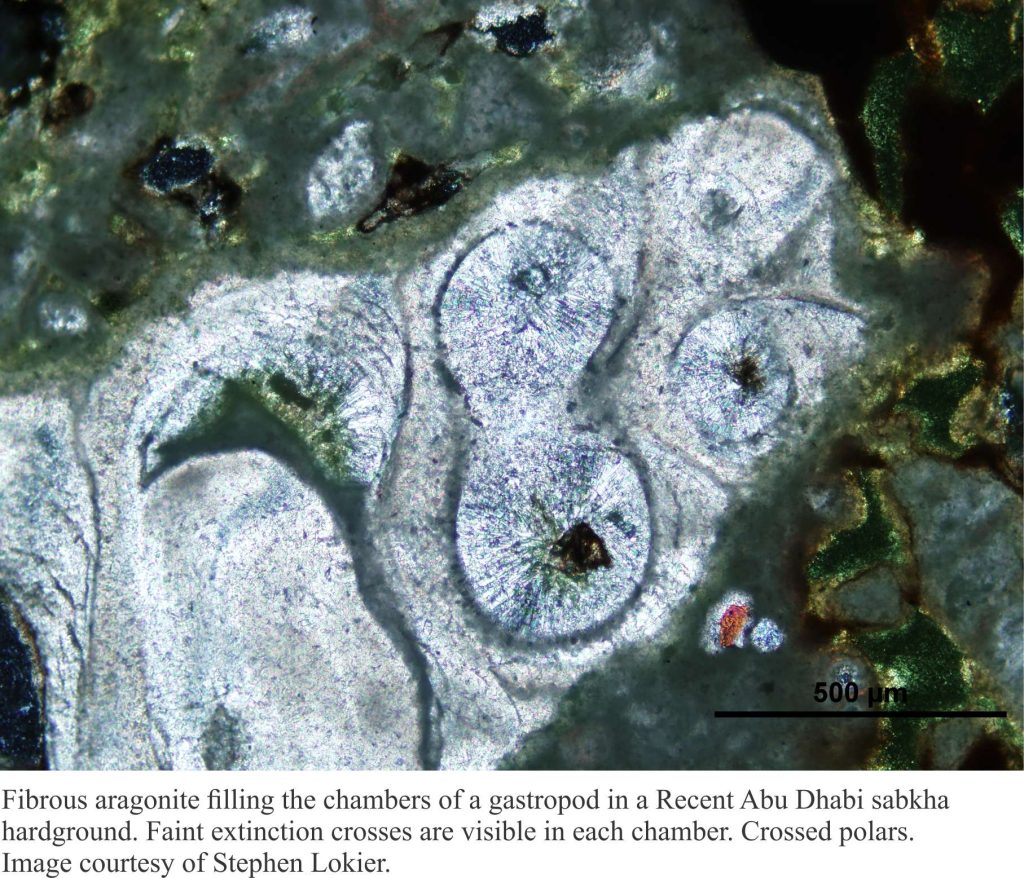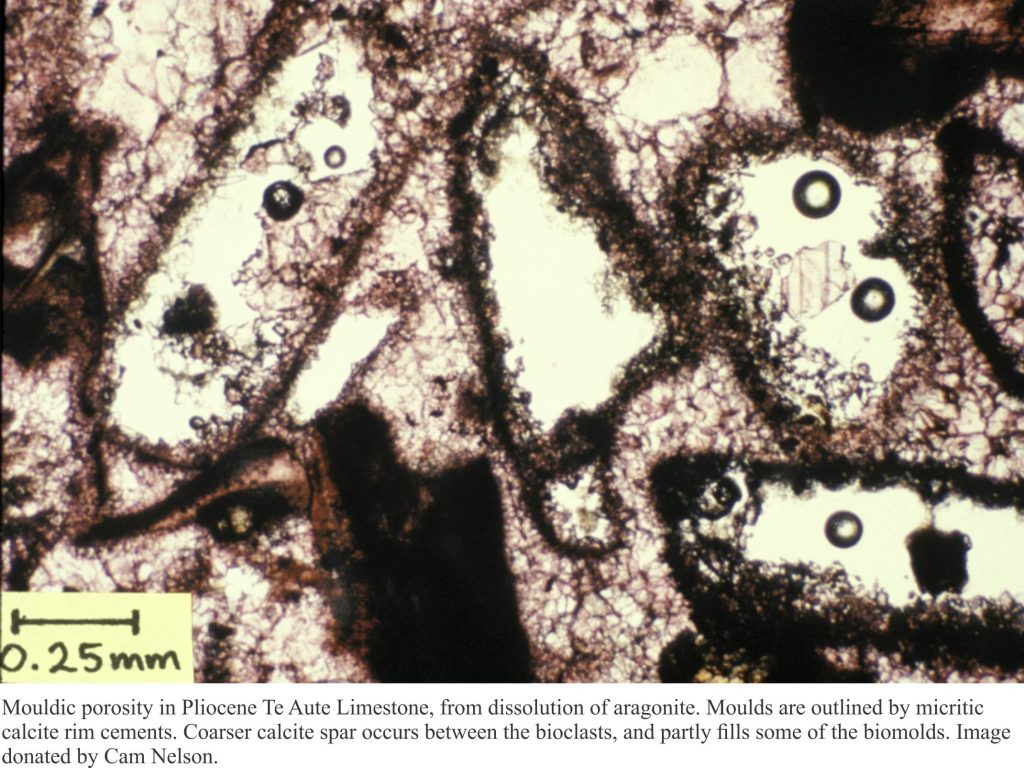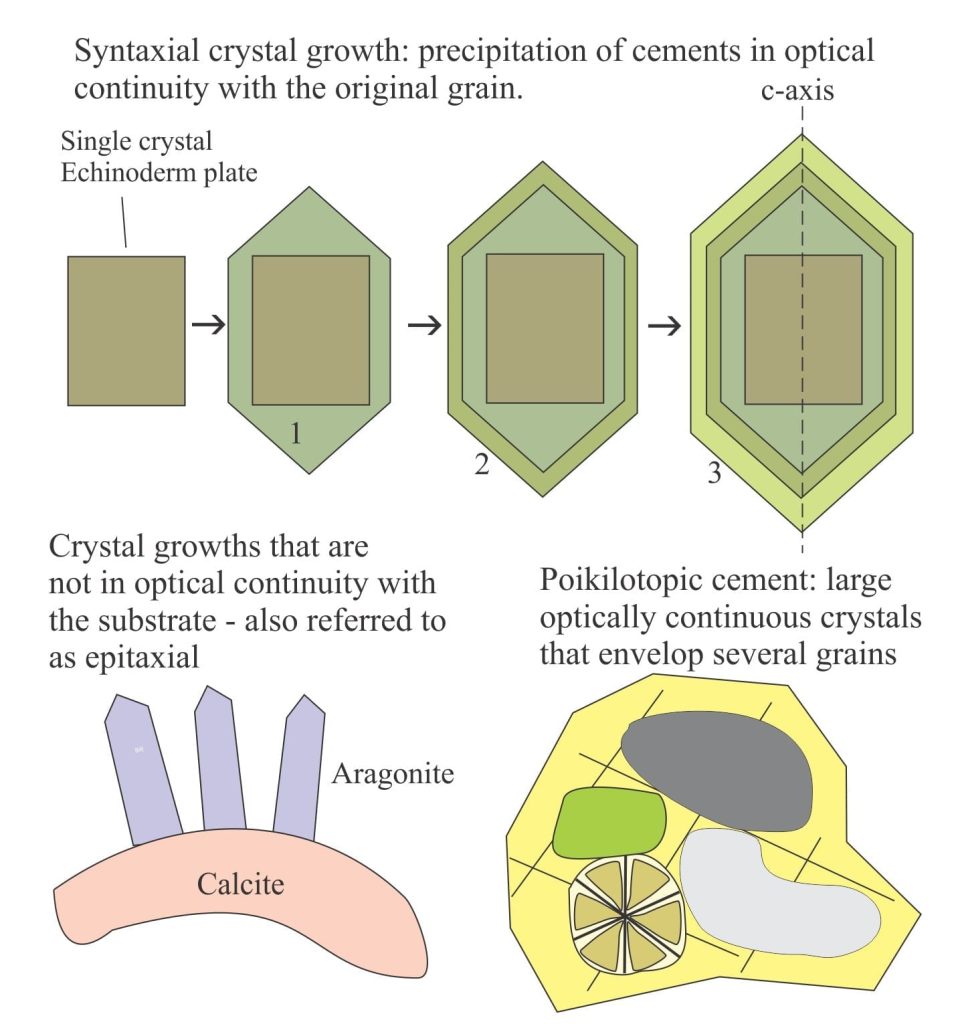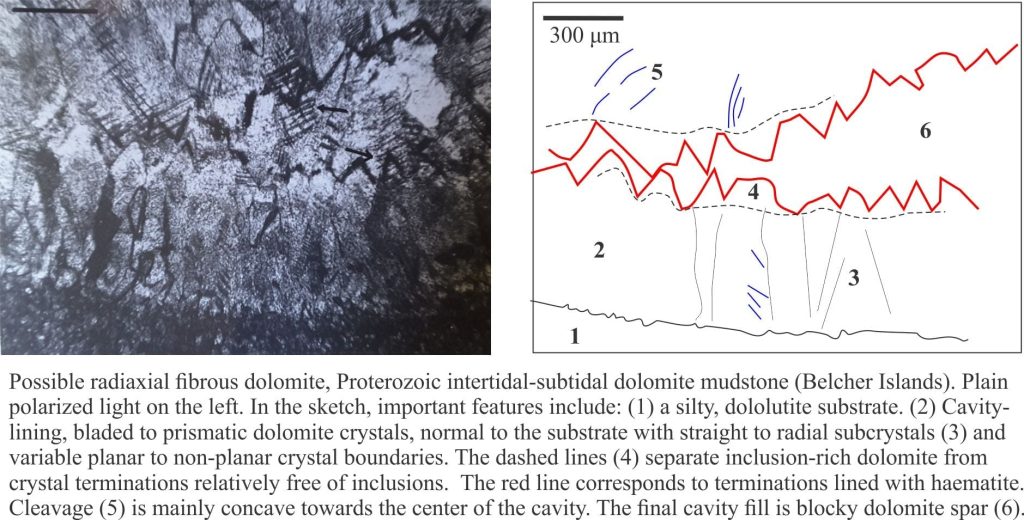This is part of the of How To…series… on carbonate rocks
The diagrams and images of carbonate crystal habits and cements are descriptive and intended to provide essential background to other posts that detail the different diagenetic environments.
Carbonate diagenesis is like a game of two halves: one part involves mineral dissolution, the other precipitation. The two commonly go hand-in-hand; it all depends on the changing fortunes of thermodynamic stability and interstitial fluid flow as the game progresses.
Cements precipitate in available pore space: intergranular, intragranular (like the whorls of gastropods, the septa of corals, or the chambers of foraminifera), larger voids like those developed in reef frameworks, and microporosity such as pore throats between grains. Neomorphism and mineral replacement involve dissolution and precipitation that change existing cement fabrics and sediment frameworks and hence are not confined to pore space.
Carbonate cements are as varied as the diagenetic environments in which they form – the sea floor, meteoric, deep burial and everywhere in between. The crystal shapes of CaCO3, it’s polymorphs and chemical variants range from needle and whisker-like, to blocky spar. The transitions from one crystal form to another, their growth in open pores, and replacement by stable carbonate phases is what makes carbonate petrography so fascinating.
Distinguishing cements from replacement fabrics:
Bathurst (1976) has a good description of the criteria for making this distinction. Key among these for recognising cements are:
- More than one generation of precipitated phase, such as micritic rims followed by drusy calcite spar, or isopachous aragonite overlain by spar.
- Early cements fringe grain boundaries
- Cements are interstitial, filling available pore spaces (replacement textures commonly cut across grain-pore boundaries).
- Sparry cements tend to increase in size from the substrate into the pore space.
- Intercrystalline boundaries are planar.
- There are no relic textures (of former cement textures or grain boundaries).
- Fibrous, bladed and prismatic crystals tend to be oriented normal to a substrate, or in the case of radial textures expand into the pore space.
Crystal size and habit
The three important crystallographic habits of calcite are: (1) prismatic (both short and long), (2) rhombohedral, and (3) scalenohedral.
The terminology for crystal size and shape is from Folk, 1965 – size ranges for the three most important shapes – needle, bladed and equant, are shown on the diagram. The term acicular is regarded by some as synonymous with fibrous (needle like), but Flügel (2010) has separated it out as needle-like prisms less than 10 microns wide, so it is included here.
Cement geometry
Isopachous cements consist of fibrous aragonite, high-Mg calcite or fine scalenohedral calcite spar that rim grains or line pores; the cement fringe is of equal thickness throughout (an isopach is a map of thickness). Isopachous cements indicate saturated fluid environments.
In contrast, pendant (stalactitic or dripstone) cements accumulate on the low point of grains during gravity drainage of interstitial fluid; meniscus cements form at grain contacts where water is retained by surface tension forces. Pendant and meniscus cements indicate vadose environments where sediment wetting was less continuous; common examples are supratidal zones and meteoric settings that have fluctuating watertables.
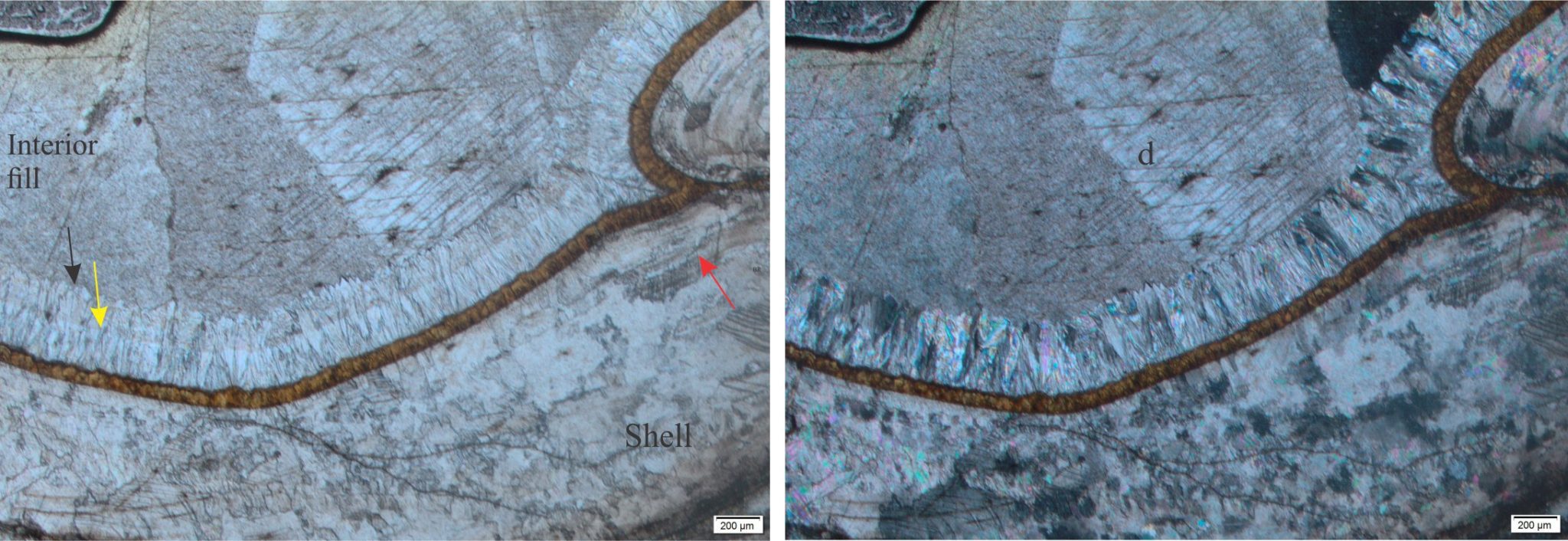
Cement fibers and needles, commonly aragonite, and high- and low-Mg calcite can form several different geometries ranging from isopachous rims and radial clusters, to large void-filling fan-shaped botryoids. They are common in supratidal through shallow subtidal settings, as intergranular, skeletal intragranular, and fenestrae. Fenestrae are large pores and cavities formed by various mechanisms including dissolution, gas bubbles, crystal expansion. Fenestrae are common in some cryptalgal laminates and mud mounds containing Stromatactis (spar-filled cavities, common in Paleozoic mud mounds,where the original cement was probably fibrous or radiaxial fibrous – the origin of which is still disputed).
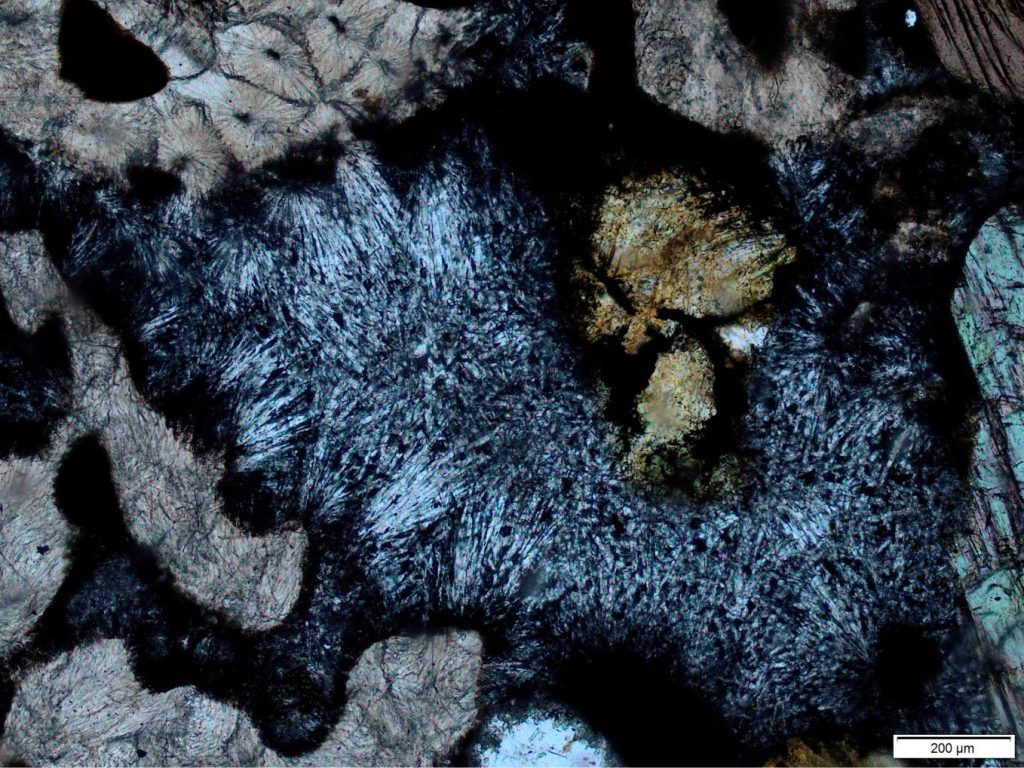
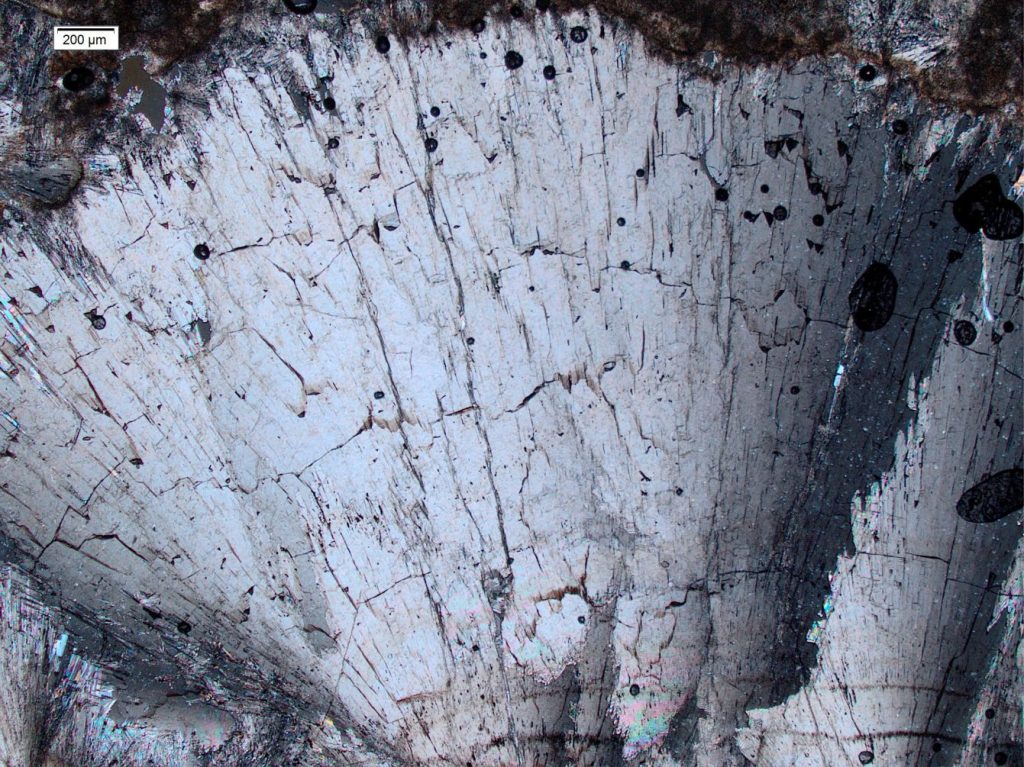
Drusy cements consist of calcite rhomb mosaics that line and fill pores and intraskeletal chambers. The size of calcite rhombs commonly increases towards the center of void spaces. They are common in meteoric and burial environments where they may overlie earlier fibrous and bladed cements. Care must be taken to distinguish these cements from neomorphic textures. The terms granular and blocky are sometimes used to distinguish different crystal sizes in calcite spar, but from a practical point of view are like drusy spar. However, granular and blocky fabrics are also known from neomorphic fabrics, so again, care must be exercised in making this distinction (Neomorphic fabrics are presented in a separate article).
Micrite
R.L. Folk in 1959 decided that the category of microcrystalline carbonate mud would be better served by a grammatical contraction to – micrite. The upper size limit for micrite crystals is 4µm, difficult to see with a standard optical microscope (an SEM is preferable). Micrite refers to several things:
- a primary microcrystalline aragonite or high-Mg calcite lime mud precipitate (biologically induced or mediated);
- a cement, commonly at grain contacts, and
- the product of substrate alteration by boring algae, fungi, and larger critters like boring Clionid sponges – a process call micritization. Substrates in this case usually refer to skeletal material, ooids and peloids. Micrite cements occur on grain substrates. In contrast, micritization alters those grain substrates, creating opaque, dark brown micrite rims and masses, that ultimately can obliterate primary grain fabrics. Micrite is highly reactive during meteoric and burial diagenesis for two reasons – the original metastable mineralogy, and because of the very high surface area afforded by the micron-sized particles. Therefore, aggrading neomorphism is common.
Optical geometry
Crystals that have grown on, and are in optical continuity with a substrate are referred to as syntaxial overgrowths or cements; i.e. they share the same optic axis (the term epitaxial is also used in this sense by some, although the International Mineralogical Association insists that in epitaxy the overgrowing phase is mineralogically different to the substrate). Optical continuity is determined under crossed nicols, where the overgrowth and substrate move in and out of extinction together. The classic example of syntaxial overgrowths is calcite cement precipitation on single crystal echinoderm plates.
Poikilotopic calcite cements typically consist of large optically continuous crystals that envelop several framework grains.
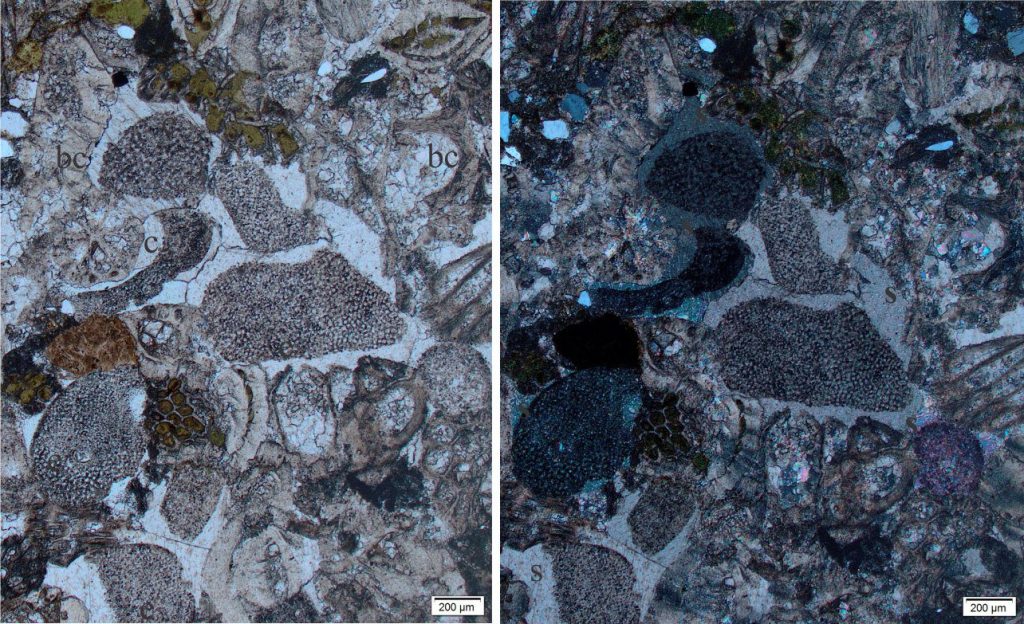
Radiaxial fibrous calcite
Radiaxial fibrous calcite and its companion fascicular optic calcite are common cavity-filling cements in ancient limestones. Both consist of radially fibrous calcite clusters but differ in their crystallographic orientation. Cleavage and twin planes in radiaxial crystals are concave toward the pore interior, in concert with optic axes that converge toward pore spaces (i.e. opposite the divergence in the actual crystals). Optic axes diverge in fascicular optic clusters (in concert with diverging crystals). Radiaxial cements commonly contain inclusions that mimic earlier cement growth. This property was one of the main criteria that led Kendall and Tucker (1973) and Bathurst (1976) to argue that radiaxial fibrous calcite was a replacement of fibrous aragonite or high-Mg calcite. Now, according to James and Jones (2015), the consensus is that both cements can form by precipitation of low-Mg and high-Mg calcite and that crystal growth is asymmetric. High-Mg calcite types will be replaced by low-Mg calcite during burial.
Thin section images generously contributed by Stephen Lokier, Cam Nelson and Vincent Caron are indicate on each figure.
Links to other posts in this series:
Mineralogy of carbonates; skeletal grains
Mineralogy of carbonates; non-skeletal grains
Mineralogy of carbonates; lime mud
Mineralogy of carbonates; classification
Mineralogy of carbonates; carbonate factories
Mineralogy of carbonates; basic geochemistry
Mineralogy of carbonates; diagenetic settings
Mineralogy of carbonates; sea floor diagenesis
Mineralogy of carbonates; Beachrock
Mineralogy of carbonates; deep sea diagenesis
Mineralogy of carbonates; meteoric hydrogeology
Mineralogy of carbonates; Burial diagenesis
Mineralogy of carbonates; Neomorphism
Mineralogy of carbonates; Pressure solution
Mineralogy of carbonates; Sabkhas
References and useful texts:
R.L.Folk. 1959. Practical petrographic classification of limestones. AAPG Bulletin, v.43, p.1-38.
R.L. Folk, 1965. Some aspects of recrystallization in ancient limestones. In L.C. Pray & R.C. Murray (eds.), Dolomitization and Limestone Diagenesis. SEPM Special Publication 13, p. 14-48.
E. Flügel, 2010. Microfacies of Carbonate Rocks: Analysis, Interpretation and Application. Springer.
Robin G.C. Bathurst, 1976. Carbonate Sediments and their Diagenesis. Elsevier, Developments in Sedimentology, 12. 658pp. An example of the longevity and utility of one of the best on this topic. Now also as an ebook.
Noel James and Brian Jones. 2015. The origin of carbonate sedimentary rocks. American Geophysical Union, Wiley works, 464p.
A.C. Kendall and M. Tucker, 1973. Radiaxial fibrous calcite: A replacement after acicular carbonate. Sedimentology, v. 20, 20, p. 365-389.
